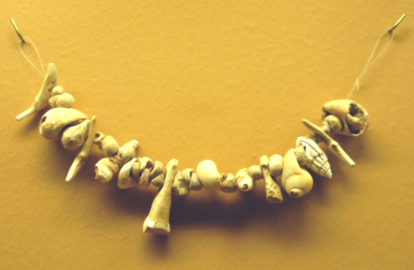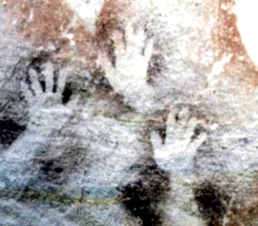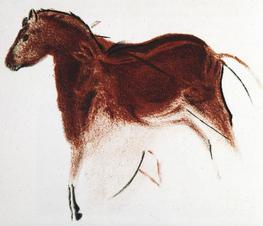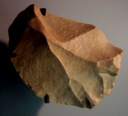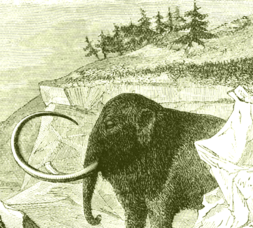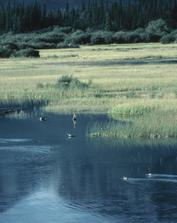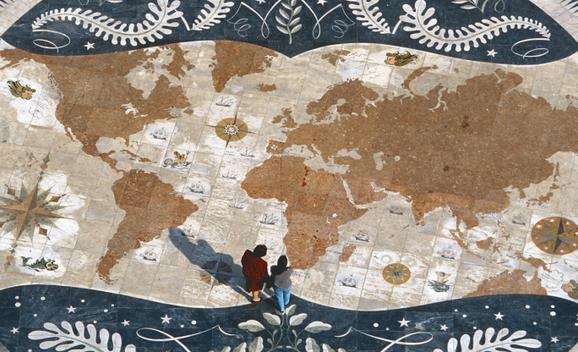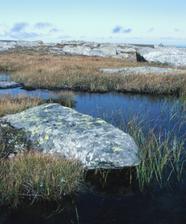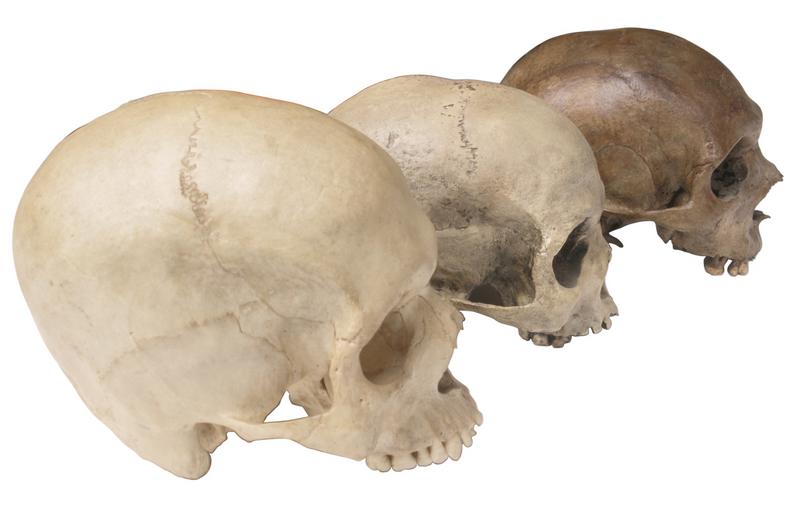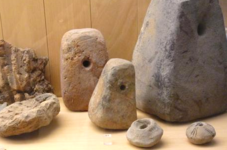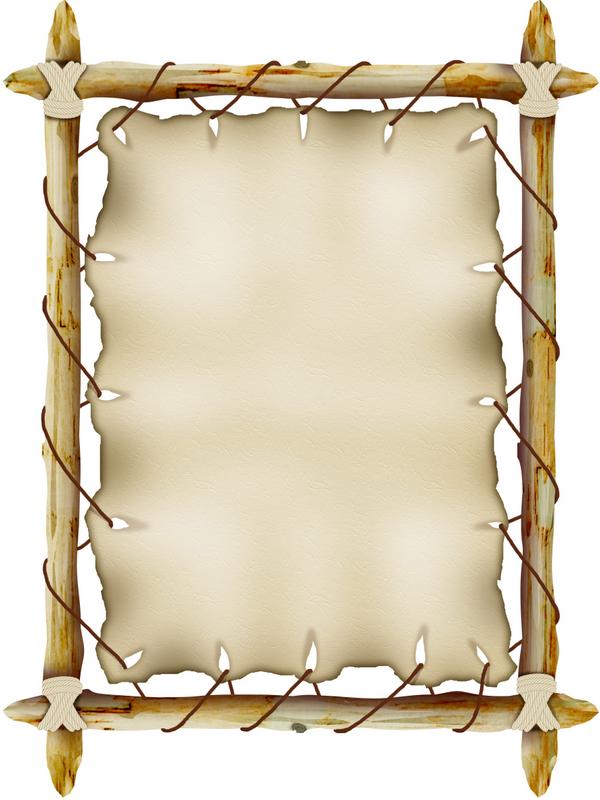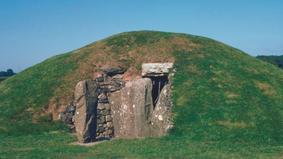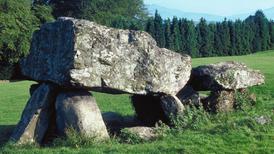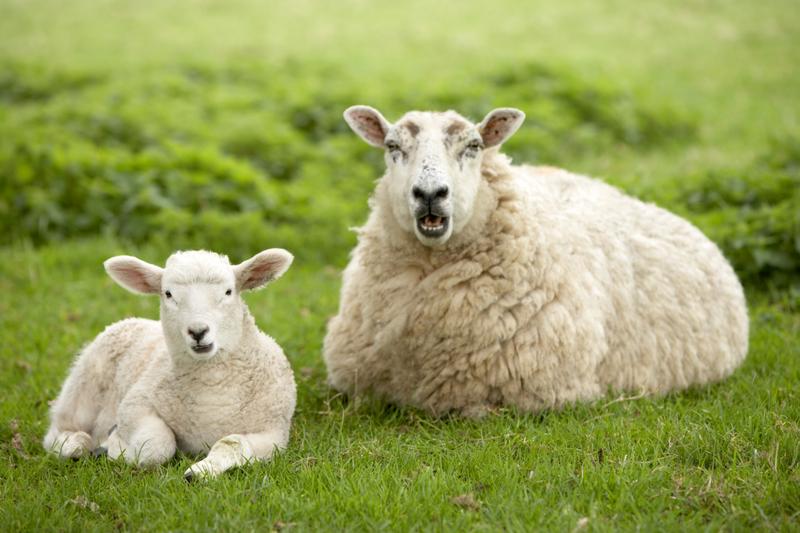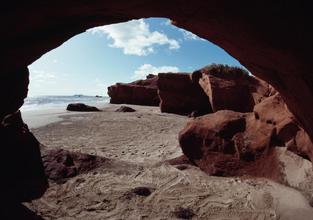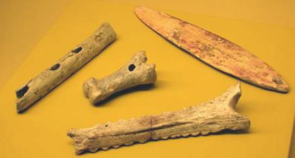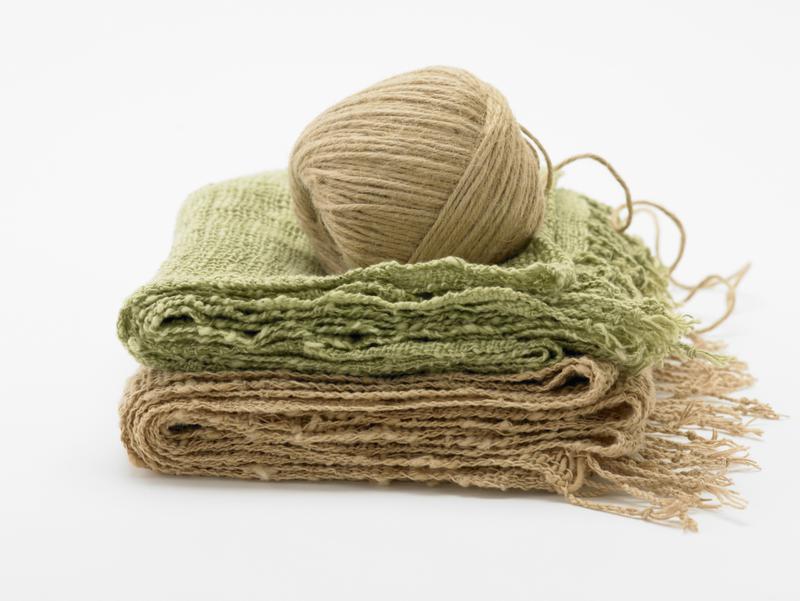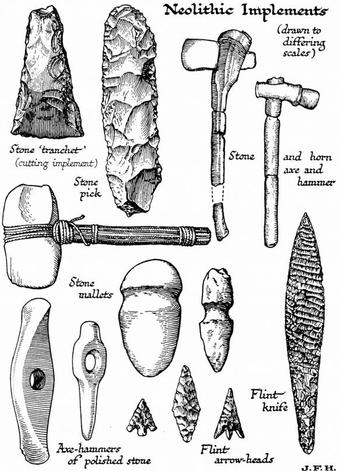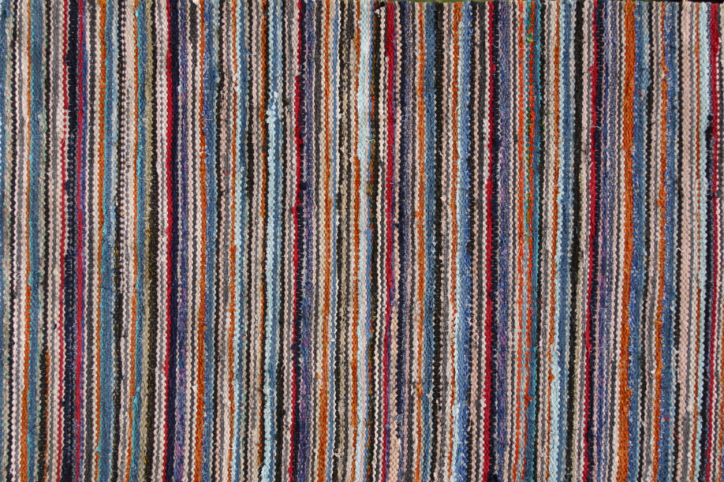Women's Travel Abroad
For Women About Women By Women
Biographies
Women in Prehistoric Times
Upper Paleolithic Venus Statuettes
National Museum of Antiquities
Saint Germain en Laye, France
Finding traces of women in prehistoric times is not very difficult. Scientists have been digging up our fossil remains for years. Archaeologists posit our Homo sapien ancestors evolved during the Middle Paleolithic some 400,000 to 250,000 years ago. As a matter of fact, we still have the genes of our Neanderthal and Homo sapien relatives in our DNA.
Early representations of women were also created during this time. On the European continent the first of these images were one-dimensional outlines engraved on the limestone of caves or cliff overhangs. The most famous of these is the Venus of Leussel. By the Neolithic period Venus images became more complex three-dimensional carvings made of ivory or semi-precious stone.
Unlike the other two completely intact Venus figurines you see above only the head portion of the Venus of Brassempouy has survived. All three of the statuettes are no bigger than the length of your thumb. The anatomy of the female body is pronounced on the two intact figures. They seem to attests to the valuable role woman play in procreation but their faces are left uncarved. Although it is hard to know what the lower portion of the Venus of Brassempouy looked like from the details in her face I can easily imagine she was as elegantly thin as most modern French women.
The Venus of Brassempouy was found in 1894 among several other female figurines in the Cave of Popes, Brassempouy, Landes, France. She is dated from the Upper Paleolithic and is almost 250,000 years old. This Venus, carved during the Middle Gravettian, is made of mammoth ivory. The figurine is the earliest known representation of a human female face. In France she is known as the Dame a la Capuche or the Lady with the Hood because of what appears to be a net covering over her hair.
Every time I go the National Museum of Antiquites in Saint Germain en Laye I visit her. She is so petite and so charming I simply cannot stay away. Sadly the tiny sculpture I see is not the real thing. The actual Venus of Brassempouy is stored way in a climate controlled environment and can only be viewed by appointment. Yet I find this replication engages me as just the same. The straight forwardness of her face with it's slanted eyes, rounded cheeks, elongated nose, little mouth, and elaborate hair style are endearing.
Although I know the Venus of Brassemprey is not a real woman I still find myself wondering what her life might have been like. I want to know everything I can about her. Fortunately, archaeologists have also dug up material culture from the period in which she would have lived that might provide me with clues about her the way she lived. Unfortunately, many questions about life during early times are still unanswered. Researchers in the scientific community are diligently working to piece together a prehistoric past.
Looking at a modern day map we see the earth as we know it today. The major land masses geographically form the continents and countries that, even without labels and names, we are familiar with. The environments of land mass in the upper portion of the map are typically frigid and inhospitable for humans because of their nearness to the north pole. Land mass in the lower portion of the map are similar because of their proximity to the South Pole. However, the area in between the North and South Pole are generally more temperate and livable. Humans, animals and vegetation thrive in this environment.
However, the world was not always so environmentally friendly. Millions of years ago both of these land masses were stuck together to form one continent called Pangea. Over time they slowly split apart and drifted. During this time of great upheaval glaciers dropped down from the North Pole covering a large part of Canada, the United States, and Europe with ice and snow.
This process occurred three times creating an intermittent pattern of cold and warm weather. The only place the glaciers did not reach was South America and Africa. It is in Africa scientists have found the oldest fossils of our ancestors. In between Ice Ages early Anthropian migrants, primates who walked upright and had developed brains, traversed many miles of land to establish themselves on the European continent. Eventually the last glaciers receded leaving behind a much warmer, more habitable environment.
We know these people brought with them fire and tools. They also brought ingenuity and inventiveness both of which are highly valuable survival skills. They appear to have been environmentally adaptable. Anthropians lived and thrived in many different kinds of climates from tundra to alpine meadows to wetlands, wore clothing made of fur, and were skillfull hunters and resourceful gatherers.
By 26,000 B.C., during the Upper Paleolithic, the Gravettian Homo sapiens of southern France had literally left their indelible mark on the evolution of human culture. They created some of the most remarkable art in the western world. Colorful images of prehistoric animals painted on cave walls provide us with a vision of the richness of their lives. At Lascaux and Chavet caves we see pictures of huge mammoths, lumbering bears, stampeding horses, herds of bison, bounding ibex, and running deer. You can use the links to the caves to take a virtual walk through both Lascaux and Chavet for an up close and personal look at the paintings.
Recent research conducted by definitely shows women were involved in painting these images. Comparing the size of stenciled hand prints found in a variety of caves she determined females artistically contributed to the beautiful paintings. They appeared to have skillfully mixed the natural mineral pigments to make vibrant colored paint. Iron oxide was pounded to a fine powder to create the red paint so characteristic of this period. Charcoal stencil outlines of the animals were colorfully embellished by artists using brushes made of animal hair or by blowing the pigments through hollow tubes made of animal bones. No doubt these women painters also stood back and admired their creations with the same satisfaction as contemporary artists do today.
NEANDERTHAL
MODERN
Neanderthals arrived on the European continent around 130,000 years ago and flourished there until the beginning of the upper Paleolithic around 40,000 B.C. They were very robust people. Skeletal remains show they had large skulls, brains, eyes, and teeth. A ridge over their eyes distinguishes them from later Homo sapiens. They were rather tall and stout. For the most part their larger hands and feet functioned similar to ours.
It has been speculated Neanderthals walked with a swayed gait because skeletal remains showed they were somewhat bent over and bow-legged. It has also been suggested they had limited speech abilities because of the shape of their tongue and voice box. Although neither of these traits can actually be proven contemporary images of Neanderthals often portray them as over-sized, insensitive grunts. However, taking the time to look closer we can see this image does not really give us a very accurate picture of Neanderthal people.
Neanderthal communities were usually composed of about 10 to 30 related individuals. In Europe they generally lived comfortably in caves or under cliffs near a fresh water river or stream. Tented shelters of hide and bone, like the one at Lazaret Cave in southern France, have also been found inside caves. Fossilized charcoal inside living areas and at hunting sites let us know fire was used to cook food, provide warmth, and scare away preditors. Furs and hides from large and small animals may have been used as blankets. Animal skulls could have been used as cooking pots.
The Stone Age spans a period of almost two million years including the Paleolithic, Mesolithic, and Neolithic eras. During this time humans experienced monumental changes in living conditions and life styles. Everything became more complex. Tools progressed from simple rocks with cutting edges for hunting wild game to polished flint blades for harvesting domesticated grain. People moved from stone caves to timber homes. Human populations increased until the upper part of Europe was entirely, albeit sparsely, occupied.
Paleolithic
Old Stone Age 2,000,000 - 12,000B.C.
HOMO NEANDERTHALS
Cave/Cliff Shelters
Mobile Encampments
Hunting-Gathering
Stone- Flint Tools
Spear Thrower
Fur-Hide Clothing
Painting-Sculpting
Trade
Ritual Burial
Mesolithic
Middle Stone Age
12,000 - 10,000 B.C.
HOMO SAPIENS
Mobile Encampments
Hunting-Gathering
Stone-Flint Tools
Spear Thrower
Fur-Hide Clothing
Trade
Ritual Burial
Neolithic
New Stone Age
10,000 - 5,000 B.C.
MODERN HUMANS
Settlements
Grain Domestication
Animal Husbandry
Stone-Flint Tools
Bow and Arrow
Textile Production
Pottery
Monuments
Cemeteries
THE PREHISTORIC AGE
Are you wondering what these resourceful Neanderthal and Homo sapien women wore? No one knows for sure. The truth is no clothing has been found from Paleolithic times. However, wear patterns on women's teeth suggest they created outfits from animal hides. Scientists think their garments may have resembled traditional Eskimo clothing which is perfect to wear in frigid environments. It is likely these women also cleaned and softened animal hides with stone scrapers, punched holes in the hide with an awl, and laced pieces of hide together with sinew to create garments. Ivory needles may have been used for finer stitching. Red ocher paint, made from iron oxide mineral pigments, was used extensively by Neanderthals. It could have easily been applied to hide for creating designs on clothing.
Along with their many other accomplishments prehistoric people appear to have been making ropes for binding, nets for fishing and trapping, and baskets for cooking and storage. Professor Olga Soffer postulates impressions on clay fragments and carvings on the womanly 'Venus' figurines, found in Europe, indicate Upper Paleolithic people had mastered twining, braiding, and knotting natural fibers. According to Soffer these Gravetian artisans were also making coiled and wicker baskets and weaving on non-heddle looms. She suggests whip stitching, using ivory needles with eye holes and sinew for thread, may have been used to join smaller pieces of fabric to construct clothing, wall hangings, and mats. Somewhat more controversial is her belief that articles of personal adornment on several 'Venus' figurines suggest women were the individuals primarily responsible for these activities.
HOMO EVOLUTION
These early residents, Australopithecines who migrated from Africa to Europe, were experienced hunters and gatherers. They hunted large game with spears and captured small game with traps. Other sources of protein came from both fish and fowl. Plants were gathered for nutrition and medicine. Their typical diet was high in protein attained mostly from reindeer. However, it was augmented with greens, berries, and nuts.
A collection of hominid skull and jaw bones, dated using paleomagnetism, found at the Atapuerca Gran Dolina cave in Spain proves humans were in Europe almost 800,000 years ago. At another Atapuerca cave, Cueva Mayor, the 1,600 human bones excavated from a deep shaft were dated between 400,000 to 200,000 years old. The Cueva Mayor bones belong to an early species of Homo heidlebergensis according to the site investigator Juan Luis Arsuaga. These bones are the oldest known human skeletal remains found in Europe.
The beach camp of Terra Amata, near Nice, France is dated at 380,000 years ago. It gives us a look at the lives of these early hominids. The cave, carved by the sea into the limestone wall of Mont Boron, had a freshwater spring. Residents built wooden wind breaks and wooden huts inside the cave to protect themselves from rainy and cold weather.
Fire pits were found inside the cave. Shells and animal bones indicate they hunted and ate limpets, fish, red deer, aurochs, rhinoceros, and mammoths. Tools made from flint, and quartz were found in the cave. Their tool kit had single and double edged choppers, pointed bi-faces, chisel-like cleavers, scrapers, and points.
Their tools were varied and carefully chipped. A Neanderthal tool kit may contain both Mousterian and Levallois style javelin points, hand axes, scrapers, and awls. Considering the large size of Paleolithic animals it is likely both females and males engaged in group hunting and butchering of game. Neanderthals would have hunted a variety of large game like the mammoth, rhinoceros, bear, auroch, and reindeer.
Scientists estimate it would have taken ten reindeer a year to meet the protein needs of one person. For a group of ten people that is one hundred reindeer. Over a year a community of this size would spend one out of every three days on the hunting for game. As the community grew in size even more time would need to be dedicated to procuring animal protein. Time would also be spent searching for wild plants to add to their diet and medicine kit.
Homo sapien women and men arrived in Europe around 40,000 B.C.. They also migrated from Africa and settled mainly in Spain and France. Initially the environment they lived in would have been similar to that of the Neanderthal people. No doubt they would have survived using much the same skills as their predecessors. Although it was generally believed Neanderthals completely died out by the middle Paleolithic recent DNA research has shown that Neanderthal and Homo sapiens probably interbred.
About 20,000 years ago, during the last ice age, ice sheets still covered the upper parts of the northern hemisphere. Scandinavia, Britain, Europe, Russia, and China were steppe or tundra. However, forests did grow in the lower parts of Europe near the ocean shore in Spain, Italy, and Greece. Ten thousand years later the last ice age ended. Temperatures gradually increased, sea levels rose, coastal low lands were drowned, and the forest spread northward replacing the previous cold weather environments.
Then mammoths and bison became extinct. However, several species of deer adapted and became the main source of protein for humans. These swift-footed, grazing animals completely changed people's life style. Humans had to follow the herds as they moved from place to place in search of food.
Humans also had to develop new ways of communal living and hunting techniques. Much of their life was lived on the run. Everything needed to be portable and light weight. Easy to move tent encampments replaced the stationary caves as primary living sites. The bow and arrow eventually replaced the spear and spear thrower as the hunting tool of choice. Arrow points became sleeker and sharper.
Climate change affected the available food resources. Intermittant warming temperatures forced game adapted to cold weather to move further north and led to the extinction of many large mammals including the woolly mammoth and rhino. Reindeer, roe deer, ibex, and auroch became a major sources of protein.
Mammoth Tooth
Carnavalet MuseumParis
Jewelry serves many purposes in human society. Some jewelry is primarily functional. Hair pins, fibula, buttons, clasps, and buckles fall into this category. Certain types of organic and inorganic materials, like amber, are considered to have magical power and are often worn as jewelry for personal protection. Other pieces of jewelry may serve to mark or signify a person's social status or group affiliation. Finally, jewelry is just one of the many ways humans express their artistic selves.
Prehistoric finds of jewelry indicate personal adornment was definitely part of the culture. Scientists can only posit feathers and wood were used for jewelry. Both of these materials are biodegradable and perish quickly unless they have been fossilized. It is known for certain prehistoric people drilled holes in shells, teeth, bones, and precious stones to hang individually as pendants or string them together to form necklaces and bracelets.
Although much of the material appears to have been gathered from close to their living sites there is evidence some of it may have been acquired through trade. Flint, the same material for making tools, blades, and points, was also used to make jewelry. More exotic stones like amber and jade was brought by traveling sales people who bartered for locally produced goods.
Many scientists believe the Paleolithic was a very important period in human development. During this time every aspect of life went through enormous change. The highly adaptable and resilient Homo species meet each challenge with aplomb. During the Mesolithic period human populations in Great Britain and Europe increased but artifacts suggest they did not significantly change. Small changes did occur but they were subtle and generally showed up as advancements in the tool industries.
Life during the Mesolithic period life above the equator appeared to be much the same as it was during Paleolithic times. However, from 12,000 to 10,000 B. C. weather in the northern climes changed radically. Glaciers receded and temperatures rose. Forest environments gradually replaced tundra flora and fauna. Many animals, especially those adapted to very cold weather, migrated further and further northward in search of food and people followed along with them.
However, below the equator huge changes had been taking place. Some people in Africa were in the process of domesticating animals and cultivating plants. When they migrated northward these humans brought with them goats and sheep, wheat and barley. The Agricultural Revolution reached Europe, Scandanavia, and Britain during the Neolithic period, 10,000 to 5,000 B.B. It remained a predominate way of life for almost twele thousand years until the beginnings of the Industrial Revolution in the 1700's A.A.
Paleolithic Bone Flutes, Whistle, and Bull Roarer
Museum of Antiquities, Saint Germain en Laye
To a certain extent this begs the question of what were the contributions of women throughout prehistory. Personally, I would like to believe in the Paleolithic, Mesolithic, and early Neolithic females and males used many of the same tools and performed similar tasks with equal skill and competency. However, there seems to be some evidence, particularly in artifacts from burial sites, the division of labor by gender proliferated in the later Neolithic as agricultural societies became more stratified and elite. The sickle, a unique tool specially created to cut grain, was also introduced during the Neolithic and is easily swung by both men and women.
OVAL
FINGER
FLUTING
TECHTIFORM
CROSS
HATCH
CIRCLE
CRUCIFORM
OPEN
ANGLE
PECTIFORM
Prehistoric Ice Age cave painters also embellished the walls of caves with a variety of signs. As a matter of fact, geometric signs outnumber animal and human images in most Ice Age caves by a ratio of 2 to 1 or more. Genevieve Von Petzinger is studying the geometry of the signs to find repetitive patterns and continuity of shape. She has determined that most signs painted in many caves have 26 distinct shapes. The above sign are among the most predominate shapes found in European caves.
The open angle is perhaps the oldest and most popular shape. It was used for the entire Ice Age a period that spans almost 22, 000 years of human history. The line, oval, finger fluting, cross hatch, circle, cruciform, and dots were also used during all periods of the Ice Age. The pectiform was used in the Gravetian and Magdalenian periods and the tectiform was used only during the Magdelenian period. All of these signs were found in caves in southern France.
On the Bradshaw Foundation website (bradshawfoundation.com/geometric_signs) you can read a report about her research and check out all of the 26 signs. You can also view cave paintings and rock art from Chauvet, Lascaux, Niaux, and Cosquer caves. There are also many other interesting historical topics on this website for travelers.
SAPIEN.
Paleolithic Flint Spear
Museum of Antiquities
Saint Germain en Laye
Neolithic Arrow
Flint Point
Feathered Shaft
Museum of Antiquities
Saint Germain en Laye
Raising animals and growing crops required an entirely different attitude about the world. From the Paleolithic to the Neolithic period the concept of time shifted from being somewhat fluid to considerably fixed.
During the Neolithic period documenting time became ever more important. Cultivated wheat and barley had to be planted, harvested, and processed at set times. Domesticated sheep and goats needed to routinely mated, milked, and butchered. Researchers think the ruins of grand stone circles, built in northern Europe and Great Britain, may be the larger, stationary Neolithic version of the smaller, portable lunar calendars made during the Paleolithic.
Stonehenge, in Wiltshire on the Salisbury plain, is situated on a spot in Great Britain that has been occupied by humans since 8820 B.C. The first 'henge' was erected during the middle Neolithic. It resembles the structure we see today most closely in size and shape. Little is known about how the actual structure was used. However, scientists are willing to speculate the monument may have been a ceremonial or religious site.
However, it is during the Neolithic period we do see the obvious development of tasks and tools traditionally associated with women. Elizabeth Wayland Barber, author of Women's Work, The First 20,000 Years, thinks the Neolithic practice of domestication was directly responsible for what she calls the "courtyard sisterhood." It is during this period the cultivation of grains and domestication of animals led to a more settled life style.
Furthermore, during the Neolithic the population of Europe increased radically. Scientists estimate only five hundred thousand individuals lived on the European continent in 8000 B.C. Within fifteen hundred years the population of Europe had grown to ten million people.
It would appear there is a connection between the predictability of food and birth rates. Unlike their Mesolithic sisters Neolithic women were no longer burdened with carrying their less mobile children in search of the next meal. Instead they could spend their time developing new techniques and technologies for processing, storing, and preserving the more reliable and abundant food supply.
In addition to the beautiful pictures and fascinating signs musical instruments have also been found in the caves. At Hohle Fels cave, near Ulm, Germany, a 35,000 year old flute made out of vulture bone was found next to a Venus figurine. The flute has a V-shaped mouthpiece and five finger holes. Bull roarers and rasps, have also been found in caves.
Add these instruments to the sounds human voices and bodies make (singing, humming, whistling, clicking, snapping, clapping) and it is easy for me to imagine a 'rockin and rappin' evening of paleolithic music around a blazing camp fire or inside a torch lite cave. Our prehistoric sisters also probably enjoyed performing and listening to their own musical creations.
A small portable bone artifact found at Abri Blanchard, France may be a Paleolithic calendar. Dr. Susan Johnston suggests the linear engraved dots may represent a full year cycle of the waxing and waning of the moon.
Neolithic humans, our closest ancestors, developed new tools and techniques to ensure all these tasks would be completed effectively and efficiently, none of which appear to be specifically designed for one gender or another. I have my own hammer. So does my spouse. I used my hammer to nail shingles on the roof of my house. He also used his hammer to do the same thing. We both also have our own bow and arrows and hit a target equally as well. In reality innate objects like tools are neither male or female. Tasks are not also not gender specific. It is we humans who assign gender roles to objects and activities.
Large stone mortars and pestles, which are still used in many developing countries today, were constructed to efficiently pulverize grain into an edible staple. Clay was molded into pots for storing grain. Wooden spoons and bowls were carved for stirring and serving stews and cereal.
Neolithic people soon learned it was better to utilize the by-products of living domesticated animals. Fewer and fewer goats, sheep, and cattle were slaughtered for meat. Over a relatively short period of time the Neolithic diet became primarily dependent on grain as a source of food. In the village courtyard women would spend many hours a day winnowing and grinding wheat into flour and making flat bread and porridge.
According to Elizabeth Wayland Barber skeletal remains of women found at a Neolithic archaeological site in Switzerland attest to the arduousness of this work. Repeated grinding of grain on the heavy stone grinders lead to permanent physical deformity. The pressure from kneeling and pressure from pushing heavy objects with the arm and shoulder caused major damage to many of the women's toe, knee, and shoulder bones.
Yet another activity done by the "courtyard sisterhood" was weaving on a warp-weighted upright loom. Elizabeth Wayland Barber argues this Neolithic loom spread across Europe from Hungary. She believes it can be traced back to the widely used smaller band loom. A weaver using a band loom can simply tie a single bunch of warp yarn around her waist and anchor the other end of the yarn to her big toe. She would pass the weft thread back and forth under and over the warp yarns tightening the weft yarn with a stick. Historically, larger looms seem to have developed in the area where flax first became domesticated.
This area stretches from northern Iraq to southern Europe. At the time Iraq was warm and dry so the ground loom became popular. However, in southern Europe the cold, rainy weather made the upright loom a more practical alternative. In good weather it could be set up outside but if it was rainy or too cold the loom could be hung indoors from the rafters or leaned against a wall. This loom takes up very little living space in a hut. Unlike the ground loom, where the warp threads are staked down to the ground on both ends, the individual warp threads on these upright loom were held in place by heavy pieces of rock or clay called whorls.
Post holes and clay weights found in Neolithic huts in the Tisza Valley, Hungary suggest cloth made on an upright loom could be four to five feet wide. Fabric woven during the early Neolithic was most often made from flax. Making flax into fiber suitable for weaving is a long and tiresome process. The outside stem must be soaked in water until it rots away (retting), the loose woody parts of the stem are twisted (breaking), and the fibers are combed until they are clean (hackling). Once these processes are complete the fibers can be woven into the fabric we know as linen.
At several sites in Switzerland (Roberhausen, Irgenhausen, Schaffs, and Murten), dating from 3,000 B.C., excavators found flax in every stage of processing. Elizabeth Wayland Barber reports the artifacts included tools for breaking and hackling, hanks of spun thread, clay loom weights, and dyed and decorated fabric. Hackling boards were made from wood set with rows of thorns. The fabric was woven in square, chevron, and checkerboard patterns and embellished with seeds.
In Europe flax is a warm weather crop. However, during the late Neolithic people realized they could get year long supplies of fiber for weaving if they sheared their domesticated sheep instead of butchering them. Around 4,000 B.C. wool became the main source of yarn. Fabric made from wool is warmer and easier to dye than linen.
Using the sharper obsidian bladed tools, introduced during the Neolithic, shearing sheep for their wool would have been an easy process. The tools used for preparing flax for weaving could have also been used to card and comb wool. It is even possible some ingenious Neolithic woman, no longer entirely dependent on animal hides to keep her warm, might have simply reused the frame she had previously used for curing hides as the structure for her upright loom.
Paleolithic Sewing/ Tanning Tools Museum of Antiquities
Saint Germain en Laye
Early to Late Paleolithic
Shell, Tooth, and Jade Jewelry
Museum of Antiquities
Saint Germain en Laye
Cave Painting Pigments and Tools
Museum of Antiquities
Saint Germain en Laye
Neolithic Mortar and Pestle
Neolithic Loom Weights and Spindle Whorls
Museum of Antiquities
Saint Germain en Laye
Museum of Antiquities
Saint Germain en Laye
Neolithic Tools, Utemsils, Pots
In order to envision the first structure we must peel away thousands of years of renovations. In 3100 B.C. Stonehenge was nothing more than a three hundred foot wide deep circular ditch and embankment which encompassed an interior circle of 56 mysterious Aubrey Holes. It was entered through a wooden arched gateway and then a doorway made of two standing stones. Inside the ditch were four station stones set opposite of each other. Two of the stones were buried in the dirt and two are set on raised mounds of dirt .
This site appears to have been used for about five hundred years and then abandoned for the next five hundred years. Around 2100 B.C., for some unknown reason, building on the site began again. The outside circular ditch and embankment and stationary stones were completely restored. An enlarged avenue and entrance, that also pointed to the rising sun in midsummer, was widened by twenty-five feet and two Heel Stones flanked the entry.
Perhaps the most amazing and remarkable addition to Stonehenge at this time was the addition of a double horseshoe-shaped ring of upright bluestones. Each of the eighty bluestones weighed almost four tons and had been transported from the Presli mountains in southwest Wales. A large free-standing bluestone, the Slaughter Stone, found inside the ring is believed to have been used as a ceremonial altar.
Saint Germain en Laye
Evidence of cremated human remains, tools, and pottery have been found in some of the chalk-filled Aubrey holes. Although these finds do not conclusively prove funerary rituals were performed at this site it does suggest a conscious reverence for the dead had developed by the Neolithic period.
More conclusive proof of ritual burial comes from fifteen long barrows, within a three mile radius of Stonehenge, where late Neolithic farmers interred the bones of their dead. Almost a hundred more long barrows can be found in the surrounding countryside which indicates the practice was wide-spread in this part of Great Britain.
The chalky mounds vary from 65 to 265 feet long and 10 to 100 feet wide. Using deer antlers or scapulae it would have taken at 12 adults 4 months to build an average size barrow. The barrow was an above ground burial place for either members of a single family or people of special importance to the community.
A Neanderthal cemetery found at la Ferassie, a rock shelter in southern France, suggests ritual burials may have taken place as early as the late Paleolithic. Two adults and five children were buried at this particular site. One of the adults, a female, was tightly flexed into a fetal position, which is usually achieved by tying the body together with a rawhide or fiber rope. Flint tools and pieces of animal bone were found in some of the graves. At other Neanderthal burials red ocher has been found.
The shape of barrows changed over time. The early Neolithic long barrows, of Britain's Windmill Hill people, are long mounds of chalk rubble that covered many interred bodies. The bowl shaped barrows of the later Beaker people are simply circular mounds of chalk rubble with a surrounding ditch specifically used to inter a single person.
During the Neolithic period in Great Britain all of these mounds contained both male and female remains. The role women played in prehistoric funeral rituals is unclear but a grave unearthed at Perre Tourneress, on display at the Museum of Antiquities, Saint Germain en Laye, clearly shows a woman buried with her valuable jewelry and trinkets. It would appear she is a woman of wealth and status. Neolithic graves in Europe are similar to those found in Britain. However, the mound of earth covering the support stones that formed the interior walls of the tunnel walkway that led to the circular burial chamber, is often eroded away leaving just a rocky table-like structure called a dolman.
Stonehenge, Wiltshire Downs, England
Remains from Perre Tourneress, Normandy
Mueum of Antiquities, Saint Germain en Laye
Bowl Barrow, Wiltshire Downs, England
Dolman, Normandy, France
Prehistoric women left behind very few artifacts to show us how how they lived. However, we can see from the Paleolithic Venus figurines and the Neolithic menheir sculptures of France that women appear to have played important roles throughout prehistory. Our ability to birth and nurture offspring was critical to the development of prehistoric societies.
Large and small images of women have been carved in stone or molded from clay from time immemorial. Sometimes we were portrayed as svelte and nubile. Other times we were portrayed bursting with the fullness of a new life. These images suggest women were seen as social assets and were highly valued maybe even worshiped as goddesses.
It is only in the last fifty years or so women scientists and researchers have created a history for us that reaches back to the very beginning of our earliest prehistoric ancestors. During my last trip to Paris and visit to the National Museum of Antiquities prehistory had been rewritten. Neanderthal culture was widely displayed replacing the once popular CroMagnon exhibits. Also, more artifacts that are typically associated with women were on show.
Thousands of years have passed since our womanly prehistoric sisters walked the earth. Recently we have been given our rightful place in the earliest history of our species. I am confident more wonderful information about our development and contributions to prehistory will be uncovered in the future.
Copyright 2017 Creative Travel Publications, LLC
Please Feel Free to Contact Me Personally With Comments or Questions
